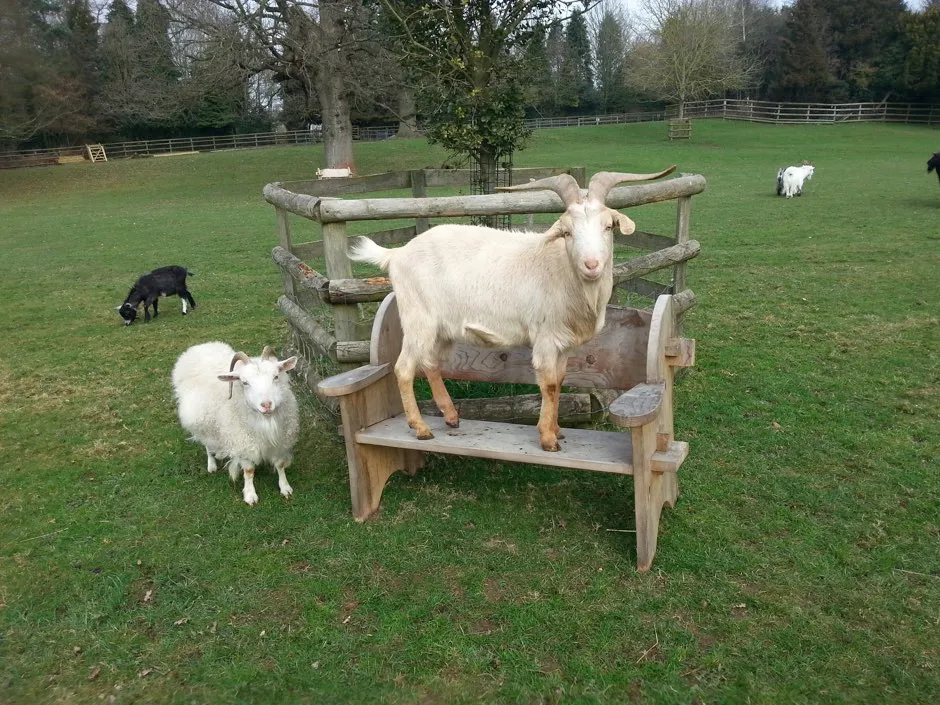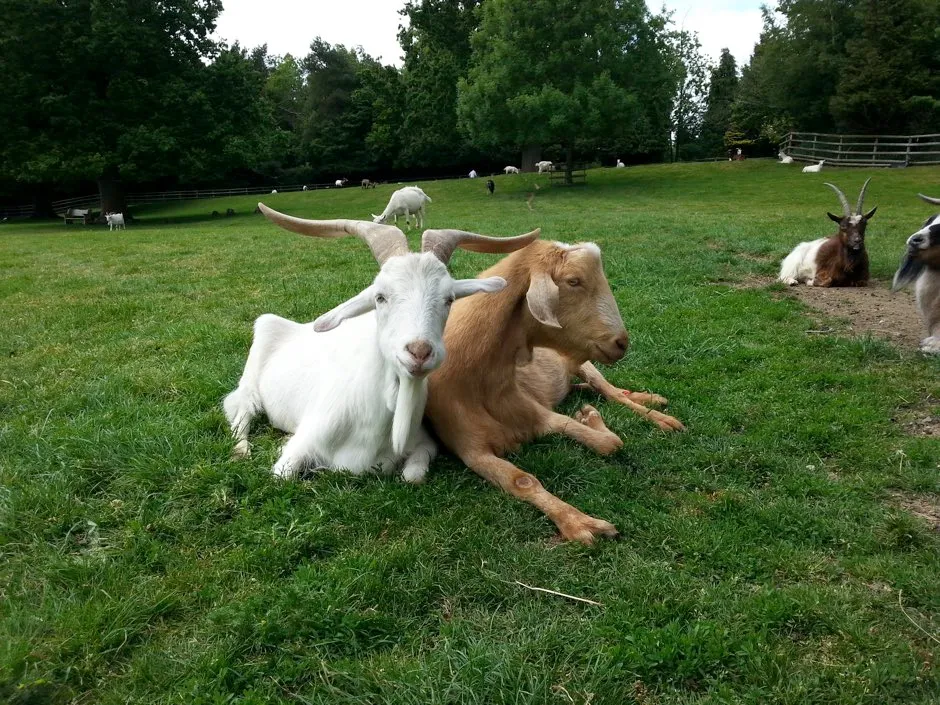1
Daily contact with nature in month-long scheme has lasting benefits – survey
An assessment of the Wildlife Trusts’ 30 Days Wild project found the positive effects were still in evidence two months later.
The boost to health and wellbeing from a period of daily contact with nature can last for months, a review suggests.
An assessment of The Wildlife Trusts’ 30 Days Wild project, which encourages people to take part in daily nature activities each day in June, found that the positive effects of the month-long challenge were still in evidence two months later.
The University of Derby evaluated survey responses from more than 1,000 people who took part in 30 Days Wild over five years.
People were asked to rate their health, how connected with nature they felt, happiness and pro-nature behaviour before beginning the challenge, again at the beginning of July when it had finished, and a third time in September.
Positive increases were seen both immediately after the challenge and also two months later, the survey shows.
Those who began with a weak connection with nature saw very significant increases in how connected they felt, while taking part in 30 Days Wild made people feel healthier, happier and increased their pro-nature behaviour, the survey suggests.
Overall, those participants with the lowest connection to nature before doing the 30 Days Wild challenge gained the greatest benefits by taking part.

This year’s challenge is going ahead online despite lockdown due to coronavirus, with adults and children able to download free materials with ideas, wall charts and activities sheets for going wild in nature in June, even if it is just on the doorstep.
Professor Miles Richardson, at the University of Derby, said the evaluation “shows the positive power of simple engagement with nature”.
“We were thrilled to see that the significant increases in people’s health and happiness were still felt even two months after the 30 Days Wild challenge was over,” he said.
“The Wildlife Trusts have shown the importance of doing simple things to enjoy everyday nature and that it can bring considerable benefits.
“What really stood out was how the people who didn’t feel a connection with nature at the outset were the ones who benefited most from taking part in 30 Days Wild.”
Read more about wellbeing:
- 5 mental health apps to help you through the coronavirus crisis
- Taking the plunge: does cold water swimming have health benefits?
- The science of happiness: seven books to bring a smile to your face
Dom Higgins, head of health and education at The Wildlife Trusts, said: “Connecting with nature every day, in an easy way, is a must-have for our own wellbeing.
“That’s why The Wildlife Trusts are campaigning for better, wilder places near to where we all live and work so that everyone, everywhere, can enjoy nature on the doorstep.”
He added: “Our lives have been changed by coronavirus and this is giving people a reason to reflect on our relationship with nature, the way we live our lives and how we spend our free time.
“Precious moments outside on a daily walk help us to relax and feel happier.
“Even watching wildlife from a window, or on a webcam, connects us to that sense of being a part of nature, not apart from it.”
2
World on track to capture and store enough CO2 to meet climate targets – study
But the researchers say meeting CCS requirements will not be enough on its own to achieve the goals, with other interventions also needed.
The world is on track to capture and store enough carbon dioxide (CO2) to meet some of the targets set by climate experts on reducing the harmful effects of climate change, scientists have said.
New analysis from Imperial College London suggests that 2,700 Gigatonnes (Gt) of CO2 storage space would be sufficient to achieve the goals put forward by the Intergovernmental Panel on Climate Change (IPCC) – a UN body of scientists and economists which assesses the impacts and future risks of climate change along with options for response and mitigation.
According to the researchers, this is far less than the estimates by industry experts of what is available, which suggest there is “more than 10,000 Gt of CO2 storage space globally”.
However, they point out that meeting carbon capture and storage (CCS) requirements will not be sufficient on its own to achieve the climate targets and need to be combined with other interventions such as using cleaner energy and transport as well as increasing the efficiency of energy use.

CCS is a process which involves trapping waste CO2 from emission sources such as factories and power plants, and storing it underground to stop the greenhouse gas from entering the atmosphere.
It is one of the key measures recommended by the IPCC on keeping global warming below 2°C, along with other interventions such as renewable energy and energy efficiency.
The researchers combined data on the past 20 years of growth in CCS, and found there has been an 8.6 per cent increase in CCS capacity worldwide over the last two decades, which, they say, is on track to meet some of the targets identified in the IPCC reports.
Study leader Dr Christopher Zahasky, who is now an assistant professor at the University of Wisconsin-Madison but conducted the work at Imperial, said: “Nearly all IPCC pathways to limit warming to 2°C require tens of gigatons of CO2 stored per year by mid-century.
“However, until now, we didn’t know if these targets were achievable given historic data, or how these targets related to subsurface storage space requirements.
“We found that even the most ambitious scenarios are unlikely to need more than 2,700 Gt of CO2 storage resource globally, much less than the 10,000 Gt of storage resource that leading reports suggest is possible.
“Our study shows that if climate change targets are not met by 2100, it won’t be for a lack of carbon capture and storage space.”
Read more about climate change:
- Why a carbon tax could be the answer to climate change
- Science Focus Education Pack: Climate change
- Climate change: should we change the terminology?
Commenting on the research, Grant Allen, a professor of atmospheric physics at the University of Manchester, who was not involved in the study, said that the promise of CCS as a “silver bullet” for offsetting emissions should be considered with caution.
He added: “As the study concludes, the growth of CCS installed capacity needs to accelerate before it can meaningfully offset emissions, and there is much more work to do to identify suitable storage locations.”
He said that the potential of CCS should not be seen as a reason not to cut carbon emissions now as there is no guarantee of its success.
Prof Allen added: “We need to accelerate both actions – carbon capture and emissions reduction.”
3
Goats understand pointing gestures, study suggests
The findings could have important implications for how we interact with farm animals and other species, the researchers say.
Goats can understand human pointing gestures, scientists have found.
A team of international researchers, which included experts from the UK, have found that goats, like dogs and horses, are able to interpret this human cue.
They said their findings, published in the journal Frontiers in Psychology, have “important implications for how we interact with farm animals and other species”.
Lead author Dr Alan McElligott, from the University of Roehampton, said: “Goats were the first livestock species to be domesticated about 10,000 years ago.
“From our earlier research, we already know that goats are smarter than their reputation suggests, but these results show how they can perceive cues and interact with humans even though they were not domesticated as pets or working animals.”

The researchers carried out a series of experiments at the Buttercups Sanctuary for Goats in Boughton Monchelsea in Kent to test the animals’ ability to understand the pointing gesture.
In a pre-test, which involved 20 goats, the scientists performed an object-choice task, where they placed two buckets in view of each animal and pointed towards the bucket that contained food.
Once the goats understood the meaning behind the gesture, more complicated tasks were set, with three different pointing gestures – proximal pointing, crossed pointing and asymmetric pointing.
Proximal pointing is where the researcher’s whole arm is visibly pointing at the reward bucket, while in crossed pointing only the hand and wrist are clearly visible when the arm gestures towards the bucket containing food.

In asymmetric pointing, the experimenter stands in front of the bucket without food while pointing towards the one containing the reward.
To be certain the animals were correctly interpreting the pointing gestures, the location of the food reward bucket was changed in some of the tests.
The goats were found to be better at identifying the food source when the researcher used the proximity and cross pointing hand gestures, compared with asymmetric pointing cues.
According to the researchers, this means goats can generalise their interpretation of the human pointing gesture but might rely on other stimulus to learn more about their environment.
Read more about animal behaviour:
- Weird science: 6 unusual studies on our favourite farm animals
- Meet the animals that can groove to the beat
- The man who lived like a goat
Dr Christian Nawroth, from Leibniz Institute for Farm Animal Biology in Germany and first author on the study, said: “We already knew that goats are very attuned to human body language, but we did not know if they could follow a human cue such as a pointing gesture in the same way that dogs and horses do to locate a treat.
“This study has important implications for how we interact with farm animals and other species, because the abilities of animals to perceive human cues might be widespread and not just limited to traditional companion animals.”
Read previous weeks' feel-good Friday news: